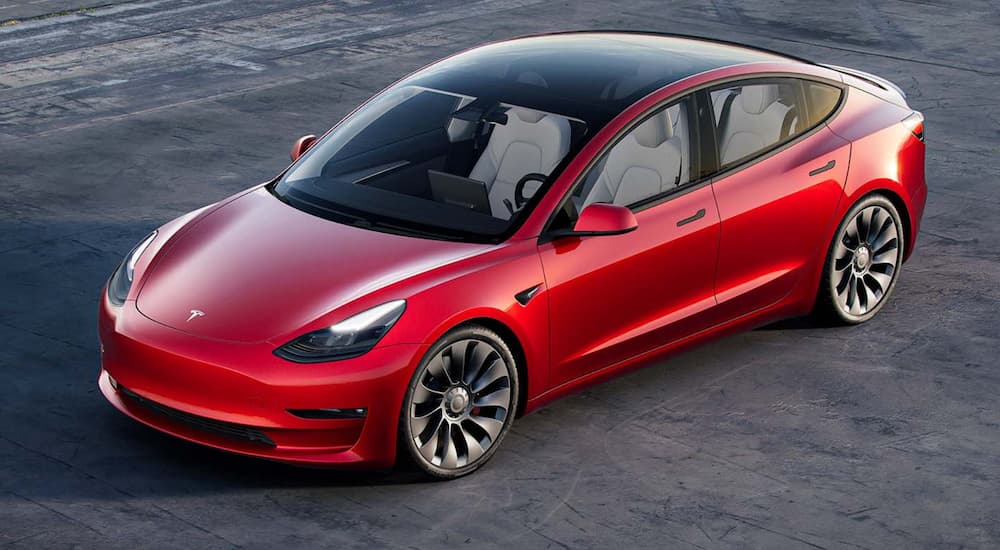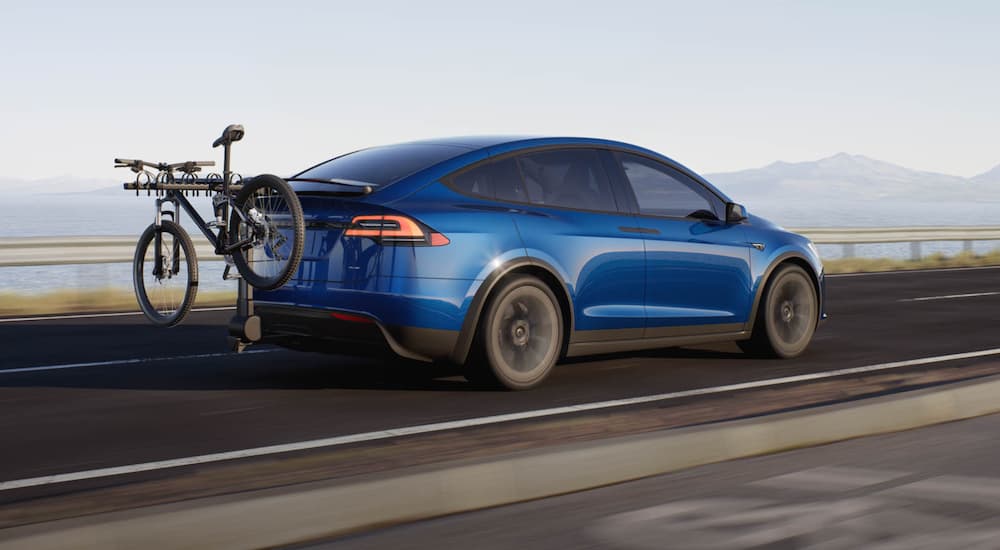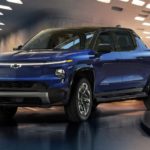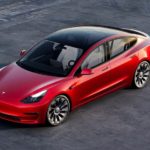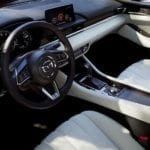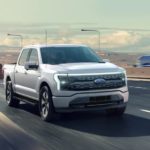For years now, rumors have swirled that Apple was looking to get into the auto industry with their own vehicle, a so-called “iCar.” From where I’m sitting, however, they don’t need to do this because the auto industry already has an Apple of its own named “Tesla.” That’s right Apple and Tesla fans, shots fired, don’t @ me. Tesla has been a highly contentious brand amongst car fans: Tesla owners love to brag about their vehicles and all the features they have, while others bag on them for a record of poor quality control and lacking interiors.
To be absolutely clear, I have no dog in this race; I don’t own a Tesla, I’ve never owned a Tesla, and I think they’re generally fine as a car company (aside from reports that employees at Tesla have been targets of racial discrimination and sexual harassment that one former worker described as, “nightmarish”). That being said, the growing number of complaints against Tesla, not only from their employees but also their customers, does make one wonder. For a company that sells high-end vehicles easily running over $60k, shouldn’t they be giving their customers more for the money?
Exhibit A: Cheap Builds and Poor Quality
Full disclosure: the evidence here is largely based on a video posted on YouTube, and yes, I know that YouTube is absolutely not the best place to gather information. That being said, this is only one of many examples and complaints you can find if you start looking for concerns over Tesla’s build quality and quality control. This is a subject that has had a lot of potential customers worried for years now and has become a long-running joke among Tesla detractors.
Direct, visual comparisons between 2021 and 2022 Tesla Model 3 vehicles have shown, at least on one occasion, that the 2022 model has significant downgrades from the previous year, which is the opposite of what you’d expect. In particular, there are a number of very noticeable panel gaps on the exterior of the 2022 vehicle. Though I’ll admit not everyone is going to lose sleep over panel gaps, it’s still something you’d expect not to find on a premium vehicle.
More damning, however, is a look at the inside of these vehicles. Checking out the interior door panels, for example, vegan leather details have been replaced by synthetic suede, and hard plastic materials have taken the place of soft-touch material. For the record, when you look at fabrics like suede or leather, and you see the word “synthetic” or “vegan,” that means “plastic.” Overall, not a good look that does suggest Tesla is cutting corners on the quality of their vehicles.
Exhibit B: The Autopilot Fiasco
Next up, we have an example of when marketing goes beyond what I’d consider a reasonable stretch of what’s realistically possible. I’m talking about Tesla’s famous (or infamous) Autopilot system, which is its semi-autonomous driving technology. For starters, there’s the fact that the terms “Autopilot” and “Full Self-Driving,” which Tesla uses, are both false; Tesla models don’t offer full self-driving, and that’s still a ways off. Elon Musk has been promising his vehicles would have it for at least five years now, and Tesla fails to deliver every year.
However, most worrisome of all is information published late last year by The New York Times, from sources they say used to work on Tesla’s Autopilot technology. According to the story, there was a lot left out of a demonstration video that was posted on Tesla’s website in October of 2016 (it’s still there) and used extensively ever since to show off what the Autopilot system can do. The video states that “The car is driving itself” while showing a Tesla navigating city streets, the freeway, and a crowded parking lot, seemingly showcasing full self-driving.
According to the New York Times’s sources, however, the demonstration didn’t just use the software and hardware available at the time. They state that the route the car followed for the video was charted ahead of time and that they created a three-dimensional map for it to use for the trip, something that couldn’t be done for daily, self-driving functionality. Furthermore, they claim that the vehicle actually crashed into a roadside barrier at one point in the demonstration and had to be repaired––something that’s not shown in the video at any point. If this is true, it means that Musk has not only exaggerated what would be possible each year but that the demonstrations of the tech have been downright deceptive.
Exhibit C: History of Silent Recalls
In recent months, Tesla has been in the news repeatedly for a number of recalls––primarily pretty minor ones––that have been fixed through over-the-air software updates. The number of recent recalls has actually been pretty staggering, considering the fact that Tesla was known to not need many fixes in the past. In part, this is because the US government, through the National Highway Traffic Safety Administration (NHTSA), has been cracking down on fixes without an official recall notice, a process often called “silent recalls.”
Some people feel that the recent surge in Tesla recall notices is due to a concern that they could get hit by the NHTSA for silent recalls. The most recent notice was for the fact that many of their vehicles can run silently and present a danger for others on the road. Some 579,000 vehicles, across all Tesla models, require an update to fix a software issue that allows them to run silently, which violates federal laws. This isn’t nearly as damning as some of the other evidence against Tesla, but it does raise questions about past updates and overall transparency.
Exhibit D: Steering Components Don’t Matter
For me, this was the story that broke the camel’s back and what inspired me to take a deeper look at what Tesla has been up to lately (though I’d read some of these other stories and had questions already in the back of my mind). It was recently revealed that Tesla decided to remove an electronic control unit from the steering racks of Model 3 and Model Y vehicles built in their Shanghai plant in order to deal with the impact the chip shortage has had on their manufacturing. These models have not, so far, been shipped to the US, but they were initially made available in China and have been shipped to Australia and parts of Europe as well.
This control unit is a backup unit used to help control the steering of the vehicle; models should have two of them to create redundancy in case one fails, but instead are being built with just one. In theory, this shouldn’t be a problem, and the vehicle should generally still function fine, but if the first control unit fails, then there’s no backup. The results could be absolutely disastrous as it would make steering the vehicle much more difficult––if it happened on a crowded highway, then lives could be lost.
Tesla has been bragging about how the chip shortage that is plaguing the auto industry hasn’t affected them nearly as badly as other manufacturers. With this story hitting the news, the full picture is becoming a bit clearer on why that is. I can’t help but wonder what else is being cut to save money and compensate for lacking microchips, not to mention that these vehicles require the secondary unit for Level 3 Autopilot functionality. This means they’ll need a physical hardware installation and not just a software update if Tesla ever does actually achieve full self-driving technology before the heat-death of the universe.
Oh, and just to be clear, Tesla had no plans on revealing this information to their customers. According to information acquired by CNBC, they discussed it internally and decided the removal of the part didn’t justify customer notification. Fantastic.
The Verdict
From where I’m sitting, Tesla is definitely moving in the wrong direction if they want to remain (or, for some, establish themselves as) a premium brand that can justify a six-figure price tag for one of their vehicles. Poor quality control, cheaper materials and parts, and removing components without letting customers know about it are all signs of a company either in decline or just looking to maximize profits for a narcissistic figurehead. As far as I’m concerned, Tesla is guilty of doing its best to become hot garbage.
